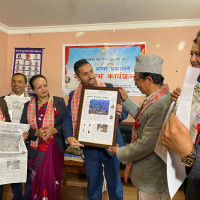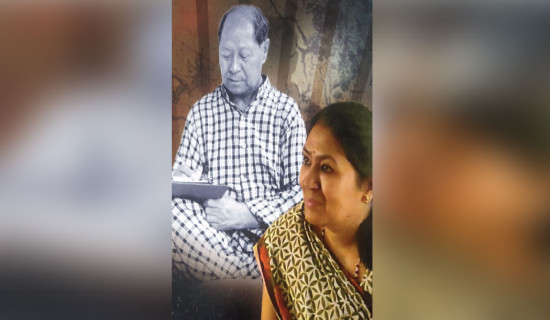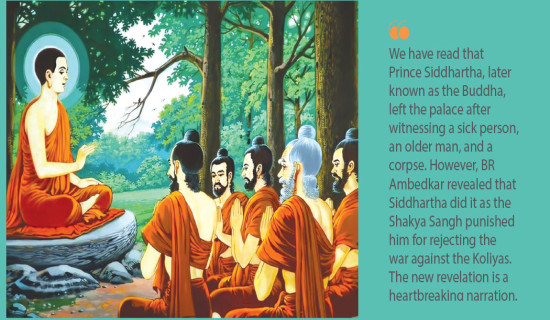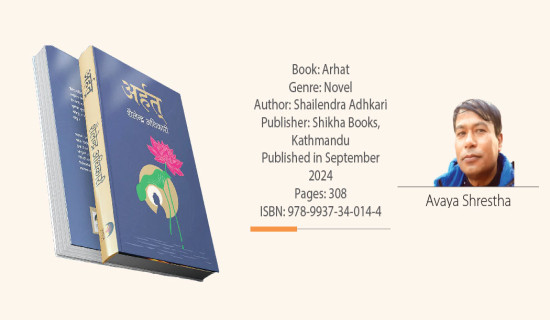- Tuesday, 2 December 2025
'Jaar': A beautiful piece of art
Kathmandu, May 16: Many readers might have gone through author Indra Bahadur Rai’s short story 'Jaar:
Bhaekai Euta Katha' (Jaar: A True Story). Even those who haven’t
read it can fully enjoy its essence by watching the film 'Jaar', directed by Sikkimese
director Phurba Tshering Lama.
There are very few examples, even globally, where a literary work has been adapted into cinema with such finesse. The world has seen excellent films made from mediocre literature and poor ones from outstanding fictions. In Nepal, 'Numafung', directed by Nabin Subba and based on a short story by Kajiman Kandangwa, is considered a beautiful example. Another is Basudev, adapted from Dhruba Chandra Gautam’s novel 'Kattel Sirko Chotpatak' (The Woes Of Kattel Sir), which is seen as a benchmark in Nepali cinema, although there are major differences between the novel and the film’s plot.
Lama's film is a very fine example that has captured the soul of Rai's short story so vividly that the film can be considered a meticulous visual translation of the original narrative. In fact, some might even find the film more realistic and moving than the story itself. The original story seems a bit dramatic, which Lama has skillfully rendered into natural and convincing visuals.
The word 'Jaar' refers to a man engaged in an extramarital affair with another man's wife, a figure for whom then Prime Minister Jung Bahadur Rana had once sanctioned beheading. In the film, the love story unfolds between lieutenant Rudraman Gurung and a young Thapa lass named Thuli. However, Rudra's younger sister, Maiti, and Thuli’s sister, Devi, are bound in a mitini relationship, a traditional bond akin to sworn sisterhood, which by social customs makes Rudraman and Thuli symbolic siblings. Consequently, Thuli is married off to another man, Harshajit Rana. But Rudraman is headstrong. Understandably so, his love predates the mitini relationship. He attempts to elope with Thuli, but she resists. Eventually, society becomes aware of the affair.
From the societal perspective, their action is a grave sin. Rudraman confesses his attempt to elope with Thuli. But what fault was it of Thuli ? Yet in the patriarchal society of that time, Thuli is considered equally guilty. Both she and Rudraman are ostracised from the society. Harshajit abandons Thuli and returns her to her parental house. Then he demands the right to behead the jaar, a traditional practice of punishing the jaar.
According to social law, Rudraman must crawl between Harshajit's legs to beg pardon. If he refuses, he must flee, and Harshajit is allowed to pursue and behead him, without Rudraman being allowed to fight back. Clearly, a man like Rudraman would never beg for forgiveness. “I am not the sort of son who crawls between someone’s legs,” he retorts. What follows is a heart-pounding chase, Harshajit chasing Rudraman, who runs to save his life. This hunting forms the core pulse of the film.
In Rai’s story, there is a scene where Rudraman fights a tiger to save
Thuli. Translating this moment to film was no simple task, but Phurba delivers
it masterfully. Rudraman, played by Saugat Malla, does it bravely, as lively as
Leonardo DeCaprio fights a bear in the Oscar winner 'The Revenant'. In the
original tale, Harshajit forgives Rudraman and aproves their marriage after
witnessing this heroic act, a resolution that feels dramatical. But Phurba
renders it far more organically in the film. When Harshajit approaches the
injured Rudraman with a khukuri (dagger), Thuli lifts a khukuri in defence. Witnessing
her willingness to fight for Rudraman, Harshajit throws his own weapon down.
After that, Rudraman and Thuli go away to Muglan.
One thematic thread that the original story highlights, but is somewhat subdued in the film, is Thuli’s rebellion against Harshajit’s male ego by throwing pote and other ornaments at his face. The film is divided into three parts, and the first doesn’t quite grip the audience as effectively. Nevertheless, the grandeur of the film remains unmatched.
Set in a Nepali society of 150 years ago, its emotional core still resonates today. At its heart, the film expresses the supremacy of love. Love is nature, whereas social rules are man-made. And nature cannot be confined by society. Phurba has captured this essence powerfully.
No doubt, Saugat Malla is a prominent actor who delivers an outstanding performance as Rudraman. Geetanjali Thapa (Thuli) and Anup Bikram Shahi (Harshajeet) have done their best. The music by Jhuma Limbu and Ganga Thapa has made the film more meaningful. The cinematography is so stunning that the story often feels narrated through visual montage. Important elements at a single scene are highlighted while the others remain misty, showcasing the camera’s artistic brilliance. Director Lama deserves high praise for this visionary approach.
This is a film that art lovers must not miss.

















